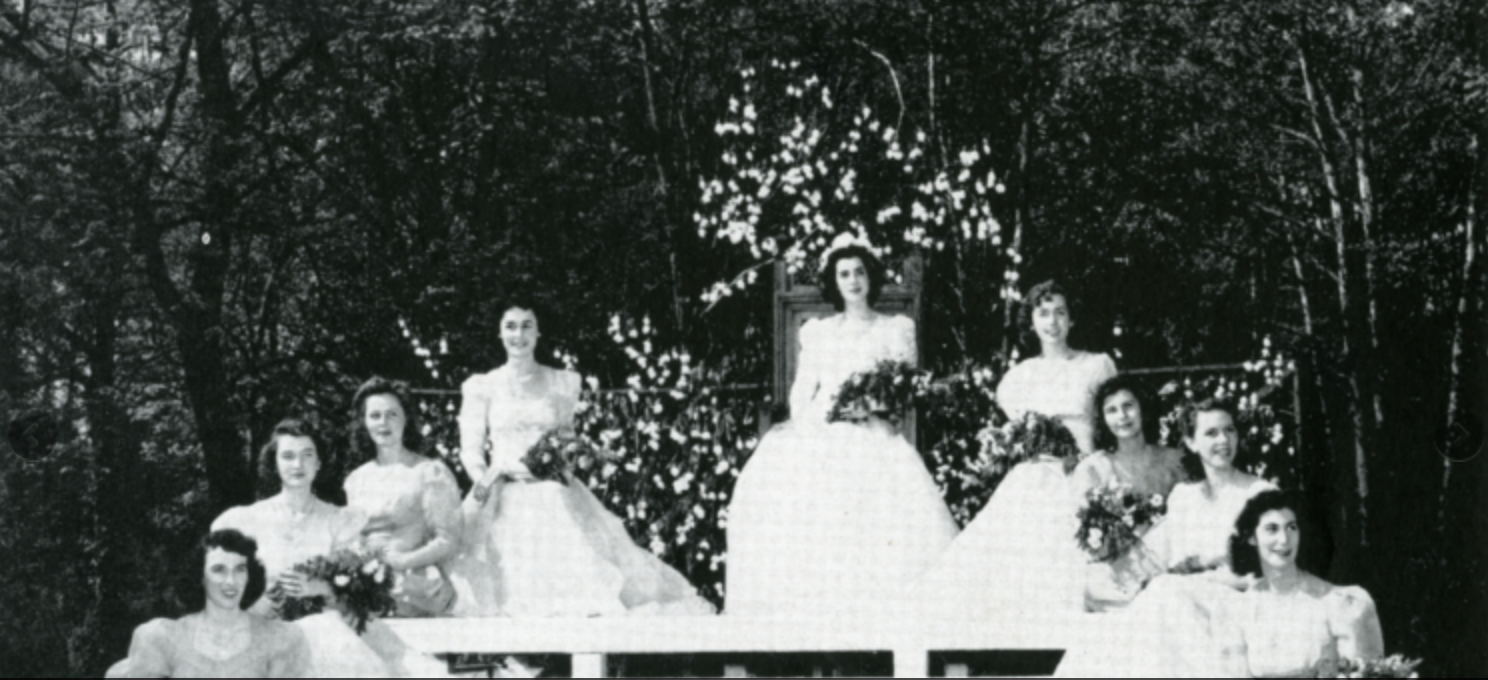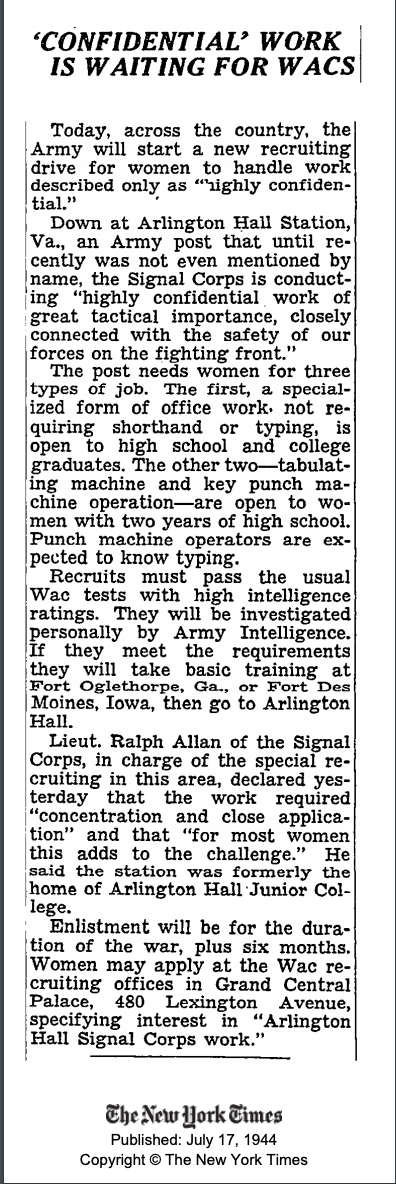
The Secret Letters
The bombing of Pearl Harbor spurred US Intelligence into overtime and accelerated the need for women in the war effort.
President Roosevelt's instatement of the Women Accepted for the Voluntary Emergency Service (WAVES), allowing women to join the navy, highlighted the urgency of the issue.
“As the war got under way the drain upon manpower brought the Signal Intelligence Service into keen competition for personnel with industry and other government agencies. Not only was it difficult to obtain deferment for male civilian employees, but it was almost impossible to keep many of the younger officers qualified for overseas assignments, but badly needed at Headquarters, from being put on orders for shipment to theaters of operations. In view of this ‘uncopasetic’ situation the Signal Intelligence Service turned its attention to the procurement of (1) military personnel, particularly Wacs, (2) female civilians, and (3) males who had been given deferred status by Selective Service”
~ Origin of the Army Records [1]
Starting in November 1941, The US Navy started secretly targeted women at all-women's colleges, convincing many women to join an “exotic” team with little details or information.
“Well it was mysteriously done, I think. I believe that the Signal Intelligence Service sent out an all points search of women's' colleges, saying that they were seeking people to work in cryptography, cryptology. And, I believe they asked for recommendations; at least the Dean of Russell Sage apparently nominated me and two other people, who were friends of mine, as possible people to come work in this exotic work. And there was much emphasis on the fact that it was very secret, and they really couldn't talk about it. But they would send a few courses, course material, that we were supposed to look at before we came down. All this happened, as I remember, in about January of the year I was to graduate, which was '42. And they did send some little booklets, and they were--what I later discovered--were the basic documents produced by William Friedman [head of the Signal Intelligence Service, groundbreaker in cryptology], the cryptography, cryptanalysis exercises. Being rather busy with trying to graduate, I'm not sure I paid too much attention to these, but at any rate we arrived down here the week after graduation, actually. And through a friend of friend we knew of a woman who had a little boarding house; it was wonderfully located on Wyoming Avenue, very close to where the split of Connecticut and Columbia takes place. And so we had a room in this funny boarding house for a couple of months. And that turned out to be a good idea, because the first few months we were here, we were assigned to a classroom in George Washington University, where they sat us down to go through these courses, the Friedman courses on cryptanalysis. Actually, it was very hot; this was June, and it was a very--one of the hotter Washington summers, and of course in those days nothing was air-conditioned except movie houses. And, as I learned later, places where they kept machinery. For instance, the tabulating machinery that we used instead of computers in those days because computers hadn't gotten around to being invented.”
~ Anna Caracristi, code-breaker [2]

An example of May Court at Goucher College in 1942. Jacqueline Jenkins (fourth from left) and Gwyneth Gminder (second from right) received secret letters frorm the US Navy. [3]
The US Navy’s need for intelligence suddenly put educated women in high demand. The women soon learned of the term “cryptanalysis” and were offered a training which, if they passed, would lead them to their final jobs.
[4]
The navy emphasized secrecy above all, prioritizing integrity over raw academic or math skills.
"‘In view of the confidential nature of the work done in this section, it is essential that all personnel be especially selected for integrity. Individual qualifications are of secondary concern, and used only as a basis for assignments after integrity has been established.”
~ Captain Lauren Safford, Navy Recruitment Office [5]

[6]
However, the secretive nature of the job made advertising challenging; New York Times Articles described the job ambiguously: “Highly confidential work of great tactical importance, closely connected with the safety of our forces on the fighting front.” [7] While the rest of society labelled these women as secretaries, female code breakers broke boundaries behind the scenes.
BACK: WWII Context
NEXT:Becoming Code Breakers
Footnotes:
1. The Origin and Development of the Army Security Agency 1917 - 1947 (Laguna Hills, CA: Aegean Park Press, 1978), 31, accessed February 23, 2020, https://books.google.com/books/about/Origin_and_Development_of_the_Army_Secur.html?id=ACfHPAAACAAJ.
2. Library of Congress, "Interview with Ann Caracristi," Experiencing War: Stories From the Veteran History Project, last modified October 26, 2011, accessed January 25, 2020, https://memory.loc.gov/diglib/vhp-stories/loc.natlib.afc2001001.30844/transcript?ID=mv0001.
3. Women's colleges in the 1940s were a mix of cerebral inquiry, marital ambition, and hallowed rituals. The 1942 May Court at Goucher College included Jacqueline Jenkins and Gwyneth Gminder who both received secret summons from the US Navy., 1942, photograph, accessed January 25, 2020, http://www.lizamundy.com/code-girls/gallery-2/.
4. Liza Mundy, "Code Girls; Gallery," Liza Mundy, accessed January 25, 2020, http://www.lizamundy.com/code-girls/gallery-2/.
5. Memorandum by Lauren Safford, "Memorandum for OP-20-WP," January 1, 1942, Navy Department, Communication Security Section
6. "Confidential Work is Waiting for WACs," New York Times, July 7, 1944, , accessed February 2, 2020, https://timesmachine.nytimes.com/timesmachine/1944/07/17/83986151.html?pageNumber=12.
7. "Confidential Work."